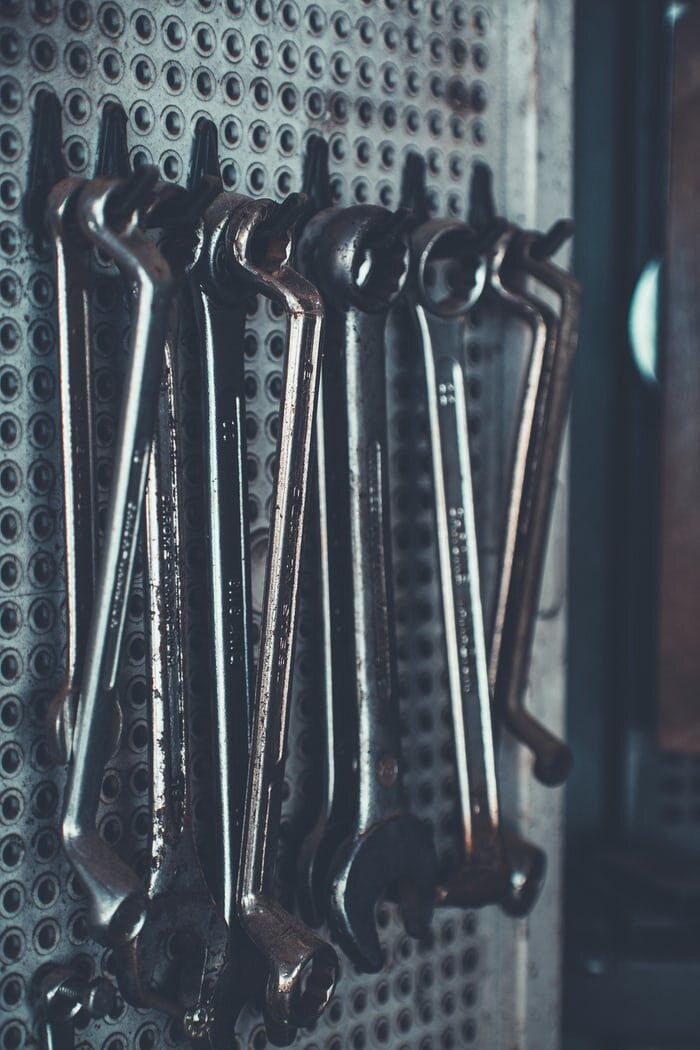I almost quit... and then I didn't.
As I was explaining how it all unfolded he was laughing, he offered perspective and thoughts for the next time, and then he said, “Doesn’t the sense of accomplishment feel good”. *
As I was explaining how a change in perspective confused the tried and true “Righty tight;lefty loosey” rule — he laughed and nodded, and said, “Doesn’t the sense of accomplishment feel good”.
I was explaining that “all ‘n all” I thought it went well except when I wasn’t thinking and spilled oil everywhere; to that he said, “Next time put out a drop cloth, and doesn’t the sense of accomplishment feel good”
It did feel good, and to think, I almost quit. The whole experience was a great reminder —
No matter how well you are prepared, it never really goes according to plan. It’s much harder than the classroom or what’s shown in the video.
It usually takes more effort than you originally thought. Figuratively speaking, be prepared to sweat.
Course correction is part of the process — you will find that sometimes you think you’re doing the right thing, when in fact, you are not.
It may very well get messy and you may want to quit. If you quit though, nothing gets accomplished and nothing of value is learned.
The sense of accomplishment feels good. You also learn important lessons for the next time you want to accomplish something.
So what was the experience I’m referring to?
Well I thought it would be a great idea to change the oil on my motorcycle. I have a Yamaha FZ09 (which I suppose is a extension of my fondness for two wheeled vehicles) and my thinking is there are just some things a person needs to know how to do — change a flat on your bicycle and change the oil on your motorcycle. After talking to some people who know about motorcycles and watching a video or two, it seemed fairly straight forward… run the motorcycle for ten minutes so the oil flows easily; remove the oil drain bolt at the bottom of the motorcycle and drain the oil; remove the oil filter; put the oil drain bolt back; replace the oil filter; replace the oil and tighten the cap; finished.
Having acquired everything I needed and reciting the mantra, “Righty tighty, lefty loosey”, I started the motorcycle.
Motorcycles heat up very quickly, the muffler gets very hot, and it’s hard to get at the oil drain bolt and oil filter without burning yourself.
My wrench can’t get at the oil drain bolt so I have to use a socket — I need metric but I just have imperial sizes. This size will work (sort of).
“Righty tighty, lefty loosey”. Why won’t the oil drain bolt come off? It should come off. I need more leverage. As I went to the other side of the bike to get a different perspective on the situation I realized I was tightening the drain bolt. Wrenching to the left the seal broke and the drain bolt was loose.
As I watched the oil pour into a pan I noticed I was working up a bit of a sweat. With the oil drained, it was time to remove the old oil filter (which is rather close to the hot pipes of the the muffler).
With my new filter removal tool in hand and “Right tighty, lefty loosey” as my guide I positioned myself to remove the filter — this tool doesn’t seem to be working very well. I need more leverage. Since it doesn’t matter what condition the filter is in when it comes off, I used the old screw driver trick and hammered a screwdriver through the filter. I could get a better grip and some extra leverage.
“Righty tighty, lefty loosey” — as I attempted to turn the filter, residual oil leaked down my hand and onto the floor, my grip started to slip, sweat ran down my face, my glasses kept falling off my face, and the metal of the filter just tore. Is it ever on tight. Let me hammer the screw driver in again and repeat. And then let’s try it two more times. I better take a break. (I suppose I could always call someone)
While I try to figure out my filter situation I’ll dispose of the old oil. I was extra cautious holding the pan because my hands were slick with oil, but neglected to consider the oil backing up through the funnel and getting all over the floor…as well as my shoes. (Why am I doing this again?) With oil stains all over the floor, oil soaked paper towel in the garbage can, and my hands slick with oil, I turned to the oil filter one last time. (If I can’t get it off I’m done and will call someone")
It’s still not moving. “Righty tighty, lefty loosey”. (I quit. I will call someone) Wait… why am I turning righty tighty? Let me adjust my new tool a little.
Lefty loosey — it moved; It moved some more. And it’s off.
Righty tighty oil drain bolt; righty tighty new oil filter; fill with 2.7 litres of synthetic oil.
Starts up nicely and no oil is leaking.
My oil change was an accomplishment, and I learned some new lessons, and relearned some others, and it does in fact feel good.
iamgpe
* It was never a question — always a statement.


